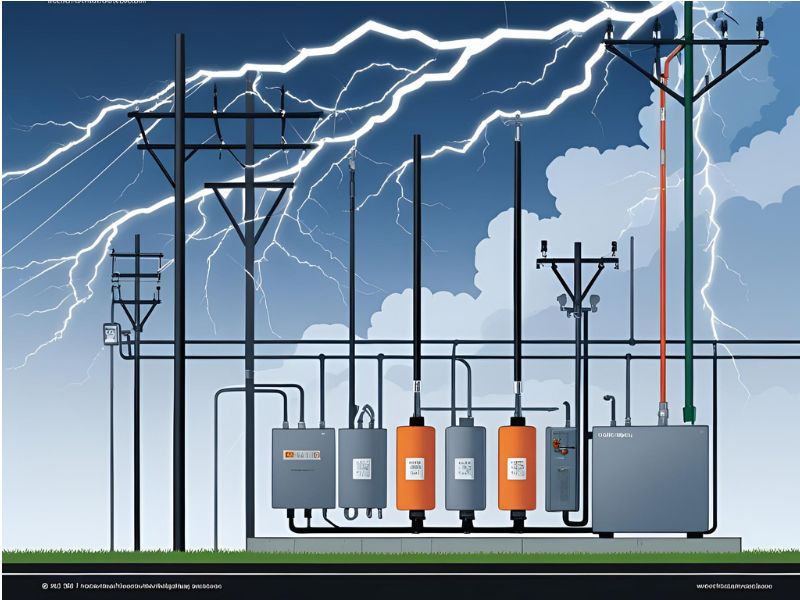
BS EN 62305 is the European standard that defines lightning protection for structures, people, and electronic systems. Introduced in 2006, this comprehensive four-part standard revolutionised how we approach lightning protection across Europe, replacing older national standards like BS 6651 in the UK with a unified, risk-based methodology.
Before 2006, Europe operated with fragmented lightning protection standards. France used NFC 17-100, Germany relied on DIN VDE 0185, and the UK followed BS 6651. This created inconsistencies across borders and varying levels of protection quality.
BS EN 62305 changed everything. As a CENELEC standard, it harmonised lightning protection across Europe, ensuring consistent safety levels whether you're protecting a building in London or Berlin. This standardisation was crucial as lightning strikes cause millions of pounds in damage annually across the UK alone. Professionals often wonder BS EN IEC 62305 vs BS EN 62305 whats the difference, as understanding this distinction is important for correct implementation and compliance.
The old BS 6651 standard, while functional, had significant limitations. Its risk assessment section contained just nine pages of guidance. In contrast, BS EN 62305-2 devotes over 140 pages to risk assessment, providing far more comprehensive analysis methods.
The new standard introduced essential concepts that were missing from older approaches:
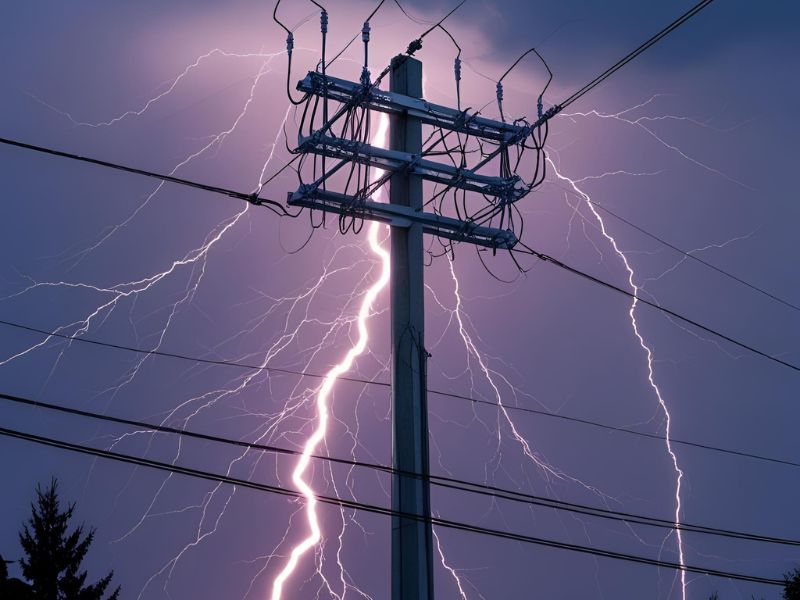
BS EN 62305 consists of four interconnected parts, each addressing specific aspects of lightning protection:
Part 1 establishes general principles and introduces key concepts like Lightning Protection Levels and Lightning Protection Zones. This foundation ensures all subsequent parts work together cohesively.
Part 2 focuses entirely on risk management, providing detailed methodologies for assessing and calculating lightning risk to structures and their contents.
Part 3 covers physical damage protection, specifying requirements for air termination systems, down conductors, and earthing arrangements that prevent direct lightning strike damage.
Part 4 addresses electronic systems within structures, recognising that modern buildings contain sensitive equipment requiring specialised surge protection measures.
Part 1 serves as the foundation, introducing essential terminology and concepts used throughout the standard. It defines what constitutes adequate lightning protection and establishes the framework for risk assessment and protection system design.
The general principles section explains how lightning protection systems work as an integral part of building design, not an afterthought. It emphasises that effective protection requires coordination between structural protection and electronic system safeguarding.
This part also introduces the concept of Lightning Protection Zones, which create progressively safer electromagnetic environments as you move deeper into a protected structure. These zones form the basis for protecting sensitive electronic systems.
BS EN 62305-1 defines four Lightning Protection Levels, each designed to intercept lightning strikes of specific intensities. These levels are based on the 10/350 µs waveform, which represents the actual shape of lightning current:
Level I provides the highest protection, designed for structures requiring maximum safety. These systems can handle lightning currents up to 200 kA, with a minimum protection level of 3 kA.
Level II offers high protection for important structures, managing currents up to 150 kA with a minimum threshold of 5 kA.
Levels III and IV provide standard protection for typical commercial and residential buildings, handling currents up to 100 kA with minimum thresholds of 10-16 kA respectively.
The choice of protection level depends on the risk assessment results and the consequences of lightning damage to the specific structure and its occupants.
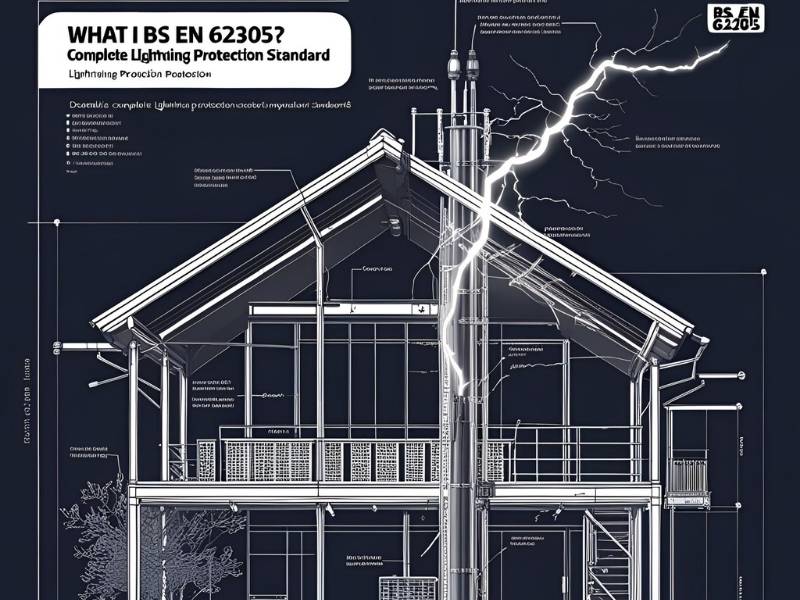
Part 2 represents a fundamental shift from simple rule-based protection to comprehensive risk analysis. This extensive section requires engineers to evaluate multiple risk factors before designing protection systems.
The risk assessment process considers the structure's location, construction materials, contents, and usage patterns. It examines local lightning density, topographical features, and environmental conditions that might increase strike probability.
Unlike older standards that applied universal protection requirements, BS EN 62305-2 allows for tailored solutions based on actual risk levels. This approach can result in more cost-effective protection for low-risk structures while ensuring enhanced protection for critical facilities.
The standard recognises that not all structures require the same level of protection, making risk assessment an essential tool for appropriate system design.
BS EN 62305-2 evaluates four distinct types of potential loss from lightning strikes:
L1 (Loss of Human Life) considers the risk to people inside structures during lightning events. This includes both direct strike effects and secondary hazards like fires or structural collapse.
L2 (Loss of Public Service) evaluates disruption to essential services that communities depend on, such as hospitals, emergency services, telecommunications, and utilities.
L3 (Loss of Cultural Heritage) addresses damage to irreplaceable historical buildings, monuments, and culturally significant structures. This category recognises that some losses cannot be measured purely in economic terms.
L4 (Loss of Economic Value) calculates potential financial losses from lightning damage, including building repair costs, content replacement, business interruption, and lost productivity.
Each category requires different assessment approaches and protection strategies, ensuring comprehensive coverage of all potential lightning-related risks.
Part 3 specifies requirements for lightning protection systems that prevent physical damage to structures and protect people from direct lightning effects. These systems provide a controlled path for lightning current to reach earth safely.
The standard covers three main components: air termination systems that intercept lightning strikes, down conductors that carry current to ground, and earth termination systems that safely disperse energy into the soil.
Protection system design must consider building geometry, construction materials, and intended use. The standard provides detailed guidance on conductor sizing, routing, and connection methods to ensure reliable performance during lightning events.
Special attention is given to structures with complex shapes, multiple buildings, or unique construction features that might complicate lightning protection system installation.
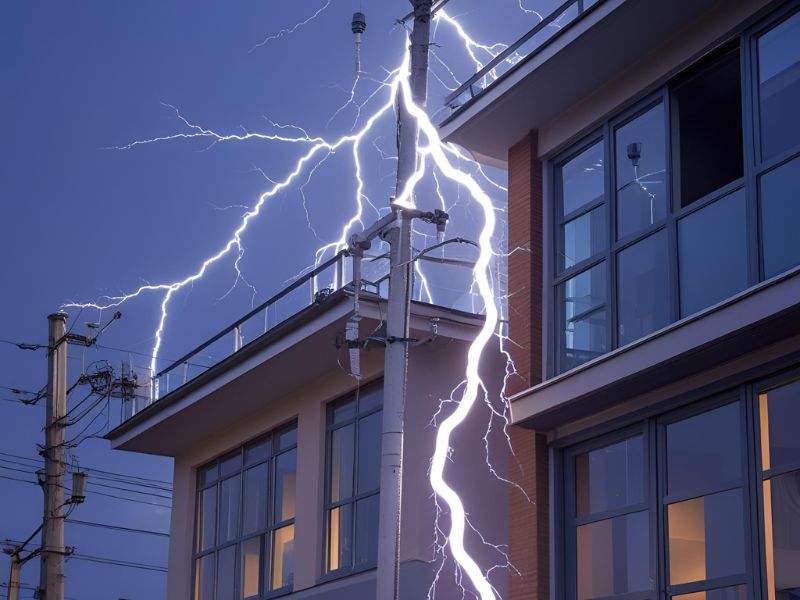
Air termination systems use various methods to intercept lightning strikes before they can damage structures. These include simple rods, meshed conductor networks, and naturally occurring metal components like roof edging or structural steelwork.
The rolling sphere method helps designers determine appropriate air terminal placement. This technique ensures complete coverage by imagining a sphere of specific radius rolling over the structure. Any point the sphere touches requires protection.
Down conductors provide multiple paths for lightning current to reach earth termination systems. BS EN 62305-3 specifies minimum conductor sizes, maximum spacing requirements, and proper connection methods to ensure system reliability.
Current sharing between multiple down conductors reduces the current density in any single path, minimising the risk of conductor damage and improving overall system performance.
Part 4 addresses the growing challenge of protecting sensitive electronic equipment from lightning electromagnetic impulse effects. Modern buildings contain increasingly sophisticated systems that can suffer permanent damage from even distant lightning strikes.
Electronic systems within structures require coordinated surge protection measures that work alongside structural lightning protection systems. This coordination ensures that both direct strikes and induced surges are managed effectively.
The standard emphasises that electronic system protection cannot be considered separately from structural protection. Both must work together as an integrated lightning protection solution.
Surge protection measures must be designed according to the Lightning Protection Zones concept, with appropriate devices installed at zone boundaries to limit electromagnetic exposure progressively.
Lightning Protection Zones provide a systematic approach to managing electromagnetic fields throughout protected structures. Each zone offers progressively better protection from lightning electromagnetic effects.
LPZ 0 represents areas exposed to direct lightning strikes and full electromagnetic fields. This includes external areas and parts of structures not protected by Faraday cage effects.
LPZ 1 and higher numbered zones provide increasing levels of electromagnetic field attenuation. Sensitive electronic equipment should be located in appropriately protected zones based on their vulnerability to electromagnetic interference.
Zone boundaries require surge protection devices to limit electromagnetic energy transfer between zones. Proper zoning design ensures that sensitive equipment receives adequate protection without over-engineering protection systems.
The zoning concept allows designers to match protection levels with equipment sensitivity, creating cost-effective solutions that provide appropriate safety margins.
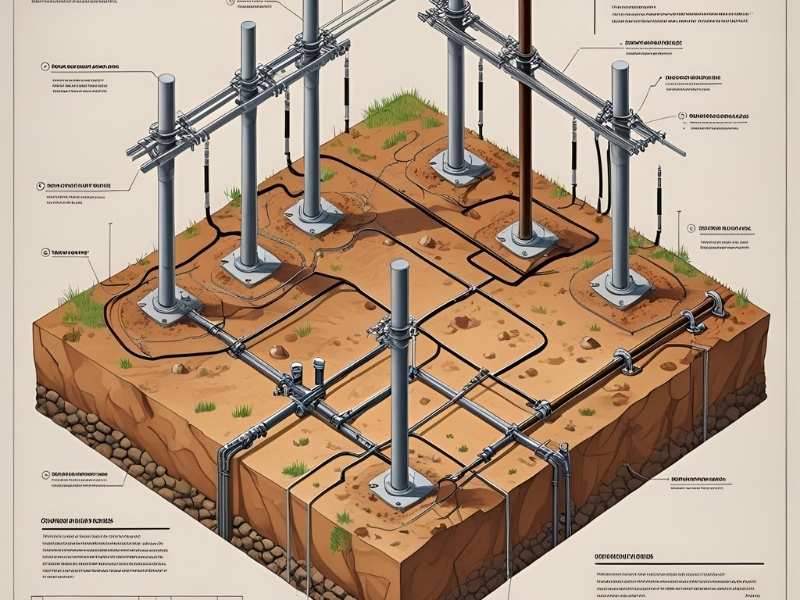
BS EN 62305-4 mandates coordinated surge protection using three types of Surge Protection Devices, each designed for specific applications and lightning protection zone boundaries.
Type 1 SPDs (lightning current arresters) handle direct lightning currents and are installed at the main electrical service entrance. These devices can manage the high energy content of direct lightning strikes.
Type 2 SPDs provide overvoltage protection for distribution panels and major equipment. They protect against lightning surges that have been reduced by upstream protection devices.
Type 3 SPDs offer point-of-use protection for sensitive electronic equipment. These devices provide the final level of surge protection at equipment terminals.
For those asking what is the IEC standard for SPD, coordination between SPD types ensures that each device operates within its design parameters, preventing device failure and maintaining protection system integrity throughout lightning events.
Proper implementation of BS EN 62305 requires qualified professionals who understand both the standard's requirements and practical installation challenges. Lightning protection systems must be designed, installed, and maintained according to strict specifications.
Installation work requires careful attention to conductor routing, connection integrity, and earth termination system performance. Poor workmanship can compromise system effectiveness and create safety hazards.
Testing procedures verify that completed installations meet design specifications and will perform correctly during lightning events. Initial testing should be followed by periodic maintenance inspections to ensure continued performance. Many property owners ask how often should lightning protection be tested—the answer lies within the standard’s clear guidance on inspection intervals.
The standard specifies maintenance requirements that help maintain system effectiveness over time. Regular inspections can identify potential problems before they compromise protection system performance.
BS EN 62305 implementation provides measurable benefits across various structure types and applications. Commercial buildings see reduced insurance premiums, fewer equipment failures, and improved business continuity.
Industrial facilities benefit from reduced production interruptions and lower equipment replacement costs. The standard's risk-based approach often reveals that comprehensive protection costs far less than potential lightning damage.
Heritage buildings gain appropriate protection that preserves historical integrity while providing modern safety standards. The standard's flexibility allows protection systems to be designed around architectural constraints.
Residential applications range from simple rod systems for basic homes to comprehensive protection for smart homes with extensive electronic systems. The standard ensures appropriate protection levels for different building types and risk profiles.
Healthcare facilities, schools, and public buildings benefit from enhanced safety for occupants and protection of critical systems that support essential services.
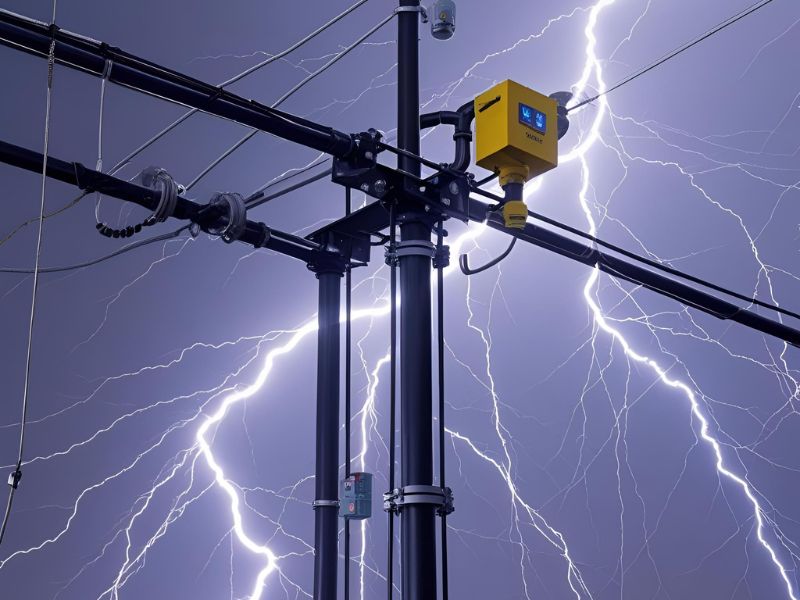
Understanding BS EN 62305 is just the first step towards effective lightning protection. Professional assessment ensures that your specific structure receives appropriate protection based on actual risk factors and usage requirements.
As a trusted lightning protection company, Lightning Protection Testing UK provides comprehensive BS EN 62305 assessments that evaluate your structure's lightning risk and recommend appropriate protection measures. Our qualified engineers understand both the standard's requirements and practical implementation challenges.
We offer detailed risk assessments using BS EN 62305-2 methodologies, helping you understand your structure's vulnerability and the most cost-effective protection solutions. Our assessments consider all four risk categories and provide clear recommendations for protection system design.
Don't leave your building's lightning protection to chance. Contact Lightning Protection Testing UK today for your free professional assessment and discover how BS EN 62305 can protect your property, people, and electronic systems from lightning damage.